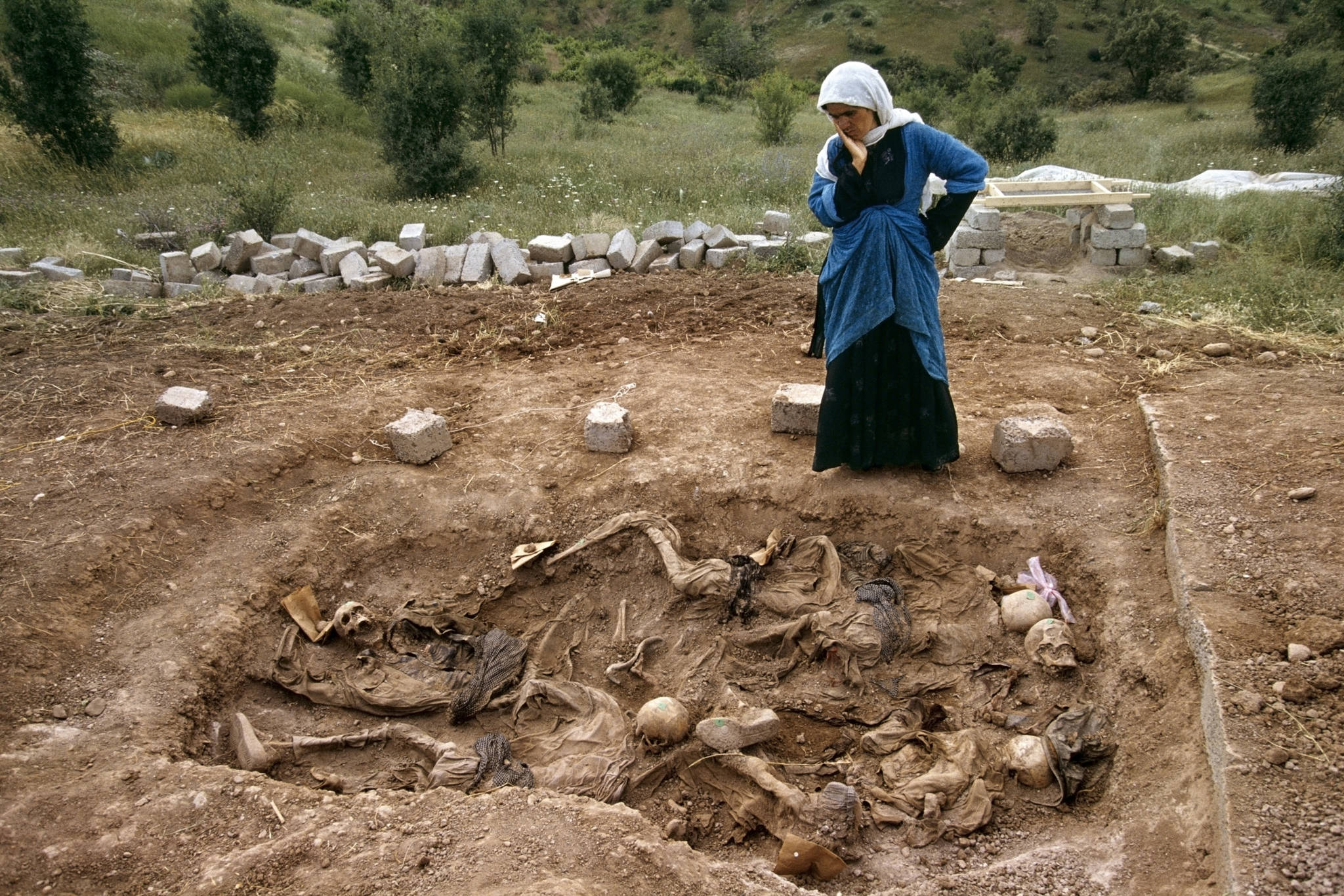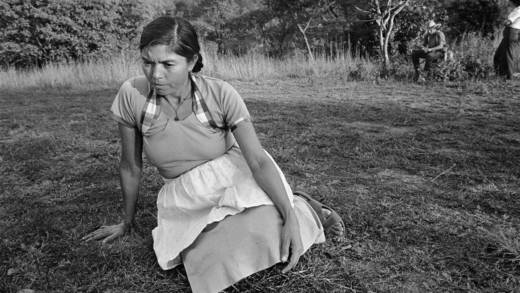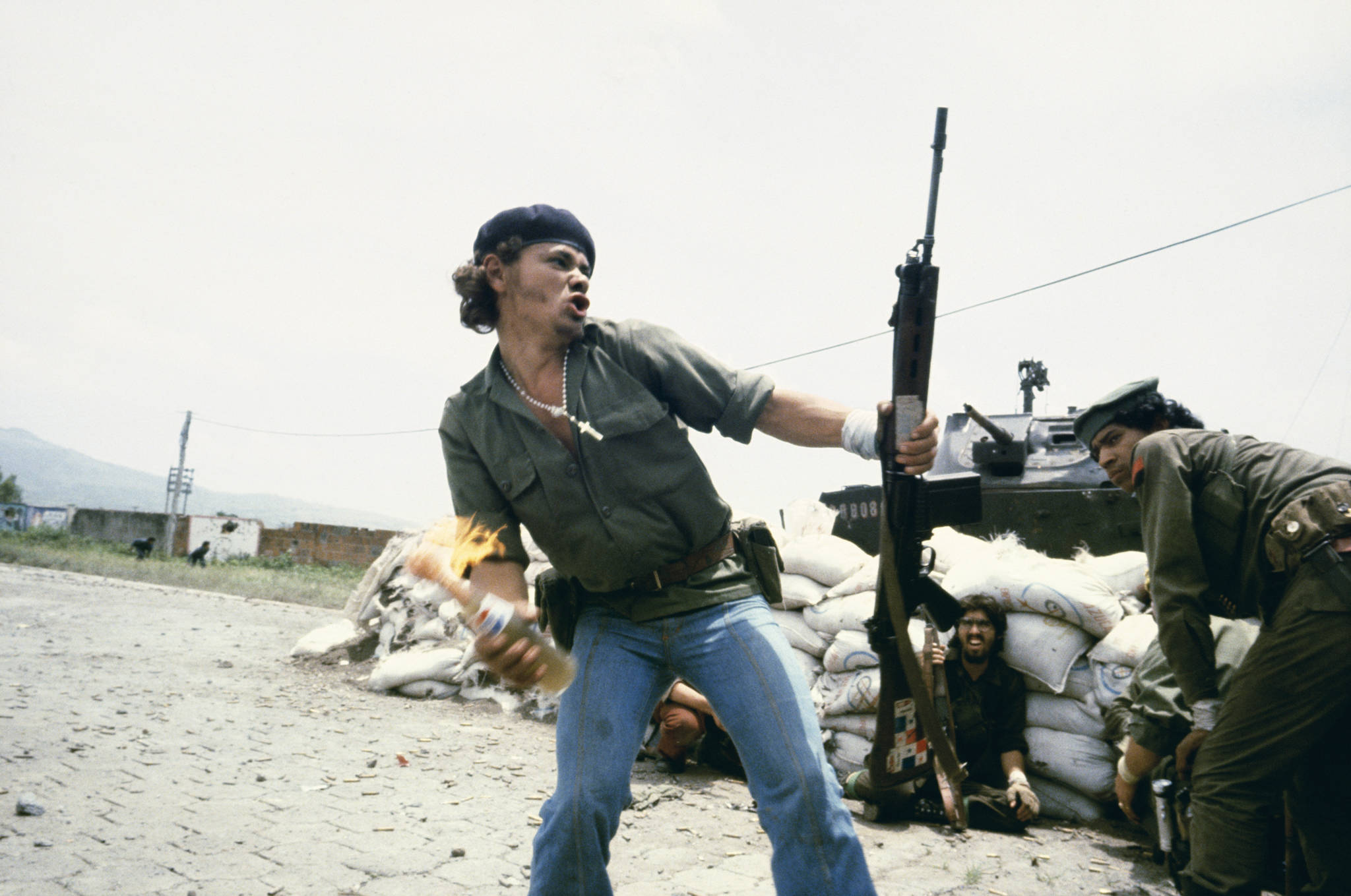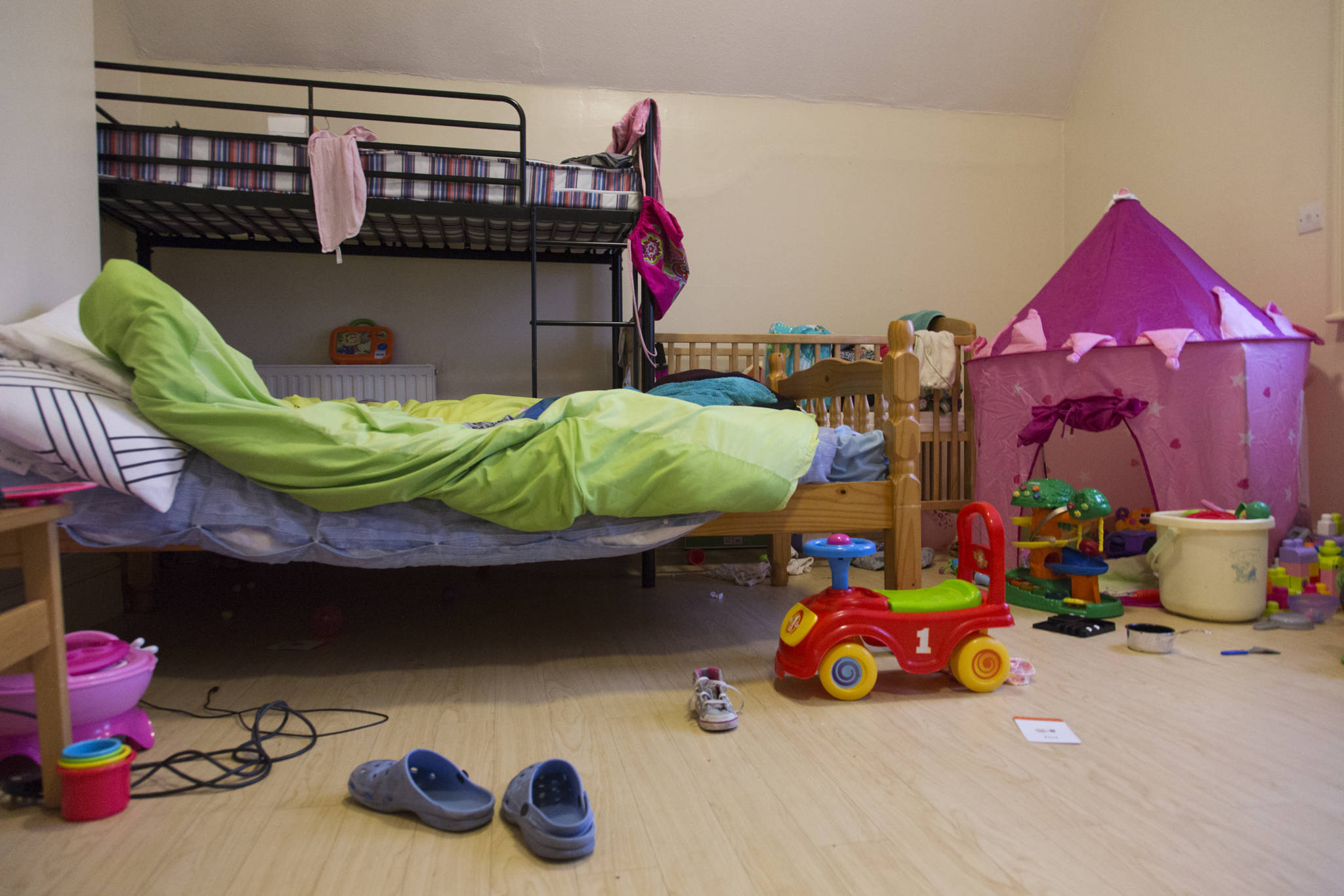For more than 45 years, Susan Meiselas has blurred the lines between photojournalism and fine art photography, documenting subjects ranging from a group of girls in New York’s Little Italy to the Salvadoran Civil War.
Much of Meiselas’ work provokes uncomfortable but familiar ethical questions about encounters between artists and victims of civil and human rights abuses, or merely those who have less to gain than the photographer. The breadth of work in Susan Meiselas: Mediations, a retrospective at the San Francisco Museum of Modern Art, provides an opportunity to consider these challenging issues.
In one of Meiselas’ photographs from 1992, an Iraqi Kurdish woman looks down intently at an exhumed mass grave with at least five skeletons, still dressed and with the tread of their sneakers visible. The woman presses her hand against her right cheek and holds her left hand behind her back. The photograph’s caption identifies this woman as a widow, but it’s not clear if she is looking at her husband, family members, or unknown individuals. Her glance is not emotionless, but it is difficult to read beyond its obvious solemnity. She seems understandably distant.
I can’t look at this image without wondering what her relationship was with Meiselas. Did Meiselas happen upon a random mourner? Or did the widow share her family’s history with Meiselas earlier in the day? Does she want to be photographed with the skeletons of her family or neighbors? Is she in a state to object to being photographed?

Ten years earlier, Meiselas took a photograph in El Salvador, during the 12-year civil war, of a couple bound and laying face down in a street, surrounded by armed men. The couple might appear to have been killed if not for the caption indicating that they were being interrogated. Here, the relationship between subject and photographer is a bit more clear. Surely these individuals didn’t consent to being photographed by Meiselas. But does that mean this story, and others like it, shouldn’t be told? If they knew of this photograph, might these individuals feel endangered or embarrassed?





